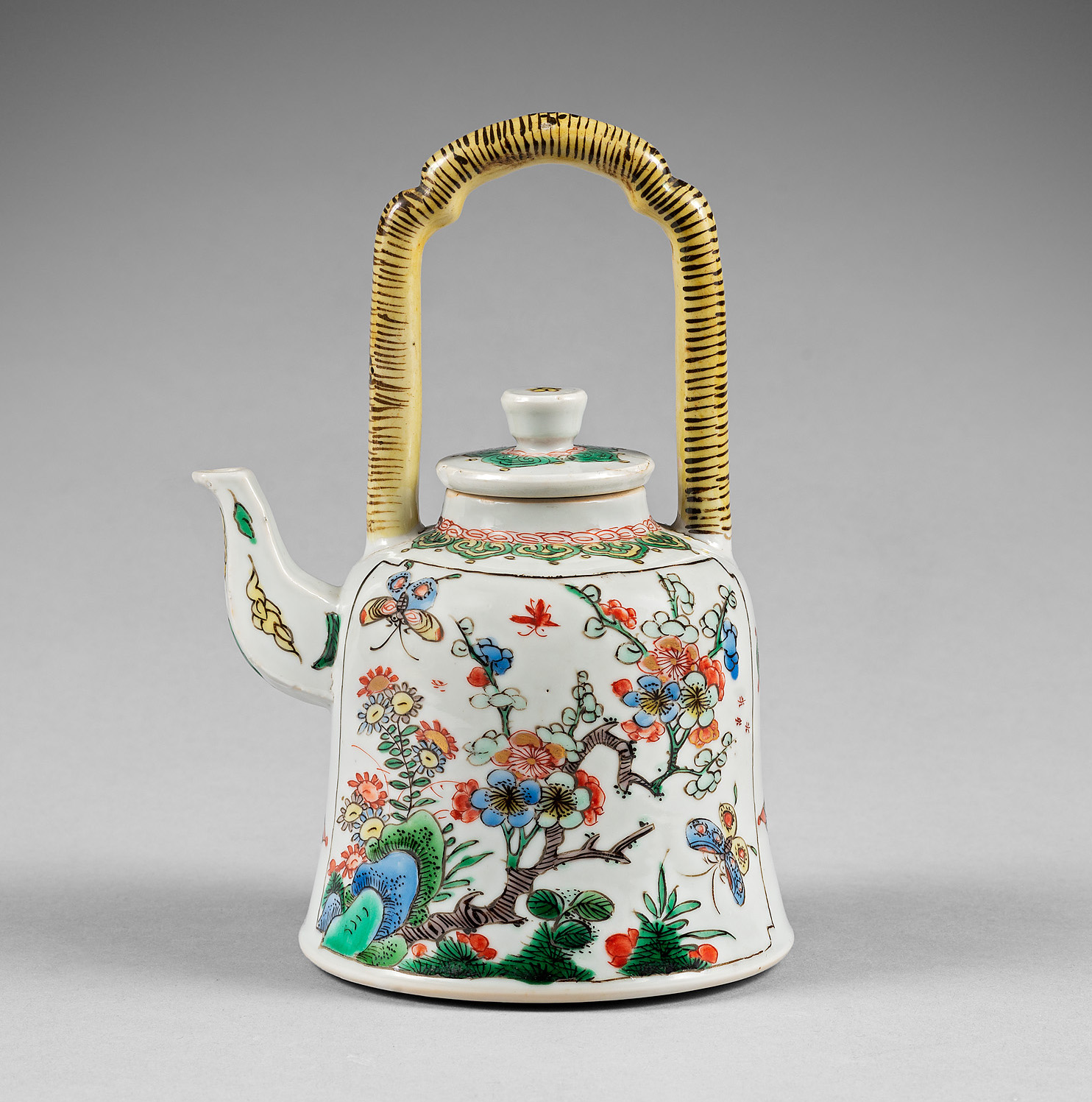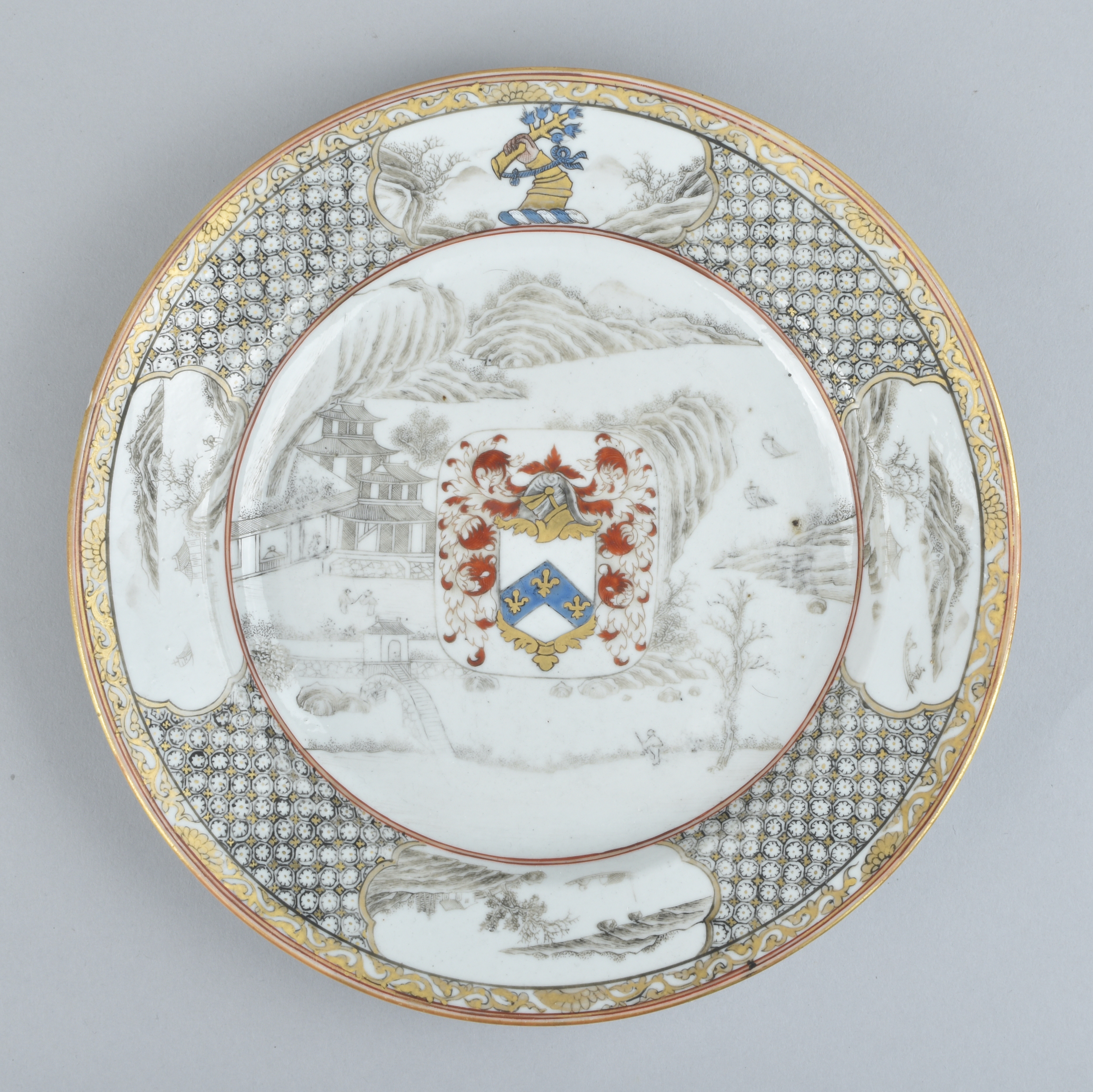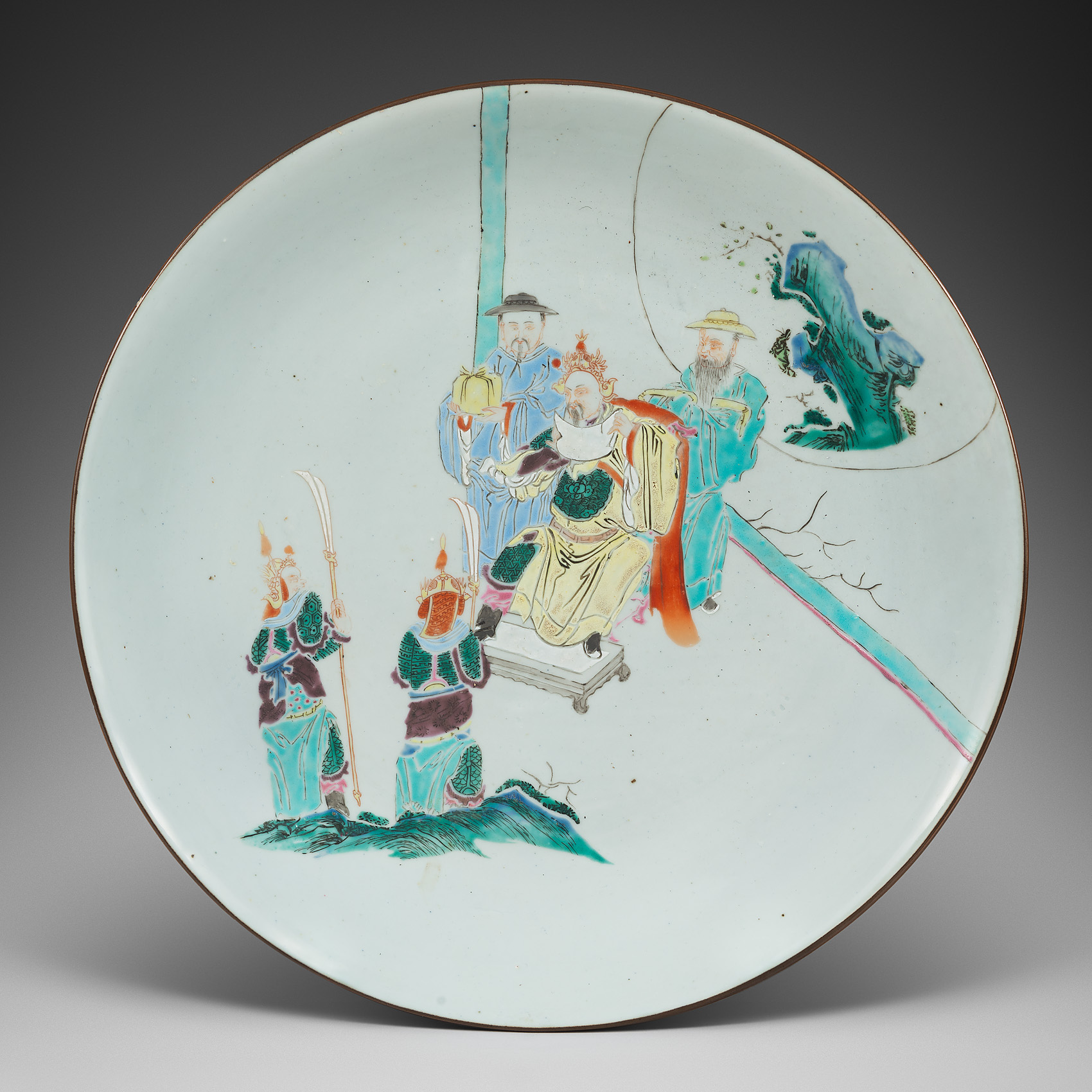
An iron-red camaieu “Zelis au bain” tea bowl and saucer. Qianlong
Very finely painted in iron-red camaieu with a continuous overall scene depicting an amorous couple embracing amid trees and flowers in a wooded garden setting. A floral garland is suspended above them with Cupid hovering beneath it, he holds a torch in one hand and wreath on the other. The tea bowl is painted in a similar fashion with traces of gilt on the rim.
- Country:
- China
- Period :
- Qianlong period (1736-1795), ca. 1766-1770
- Material:
- Porcelain
- Dimension:
- 4.72 in. (12 cm)
- Reference :
- D507
- Status:
- sold
Provenance
A French private collection of the south of France.
Related works
An identical tea bowl was published by Jorge Welsh in European scenes on Chinese Art, 2005, no. 57, pp. 217/219.
Another identical tea bowl is in the Elvehjem Museum and illustrated in Chinese Export Porcelain – Elvehjem Museum of Art, p. 119, no. 92.
Another tea bowl was in the Hervouët collection (Sotheby’s London, Fine Chinese Export Porcelain – The Hervouët Collection – Part II, 3rdNovember 1987, no. 853.
A teapot was in the Mildred and Rafi Mottahedeh Collection and published by David Howard and John Ayers in China for the West, vol. II, 1978, p. 362, no. 352.
Two saucer dishes are in the Reeves Center Collection at Washington and Lee University.
A variation exists in puce camaieu with this design, see Paulo Alves, From East to West: The Quest for Chinese Export Porcelain with Western Themes (1695-1815), 2016, no. 85.
Notice
The precise engraving which inspired this decoration is still unidentified. Scholars say it might be a work by the engraver Noël Le Mire (1724-1801), after Charles-Dominique Eisen (1720-1778), illustrating “Zelis au Bain”, an erotic poem by the Marquis Masson de Pezay (1741-1777), published in 1763, or after a painting by Jean Michel Moreau “Le Jeune” (1741-1814) illustrating the four volumes of solo songs “Choix de chansons mises en musique”, by Jean Benjamin de La Borde, published in Paris by the printer Lormel in 1773, or even a work by François Boucher (1703-1770).
The subject of gallantry illustrating loving couples is of French inspiration and was depicted in many paintings and prints by well-known artists such as Antoine Watteau (1684-1721).

























